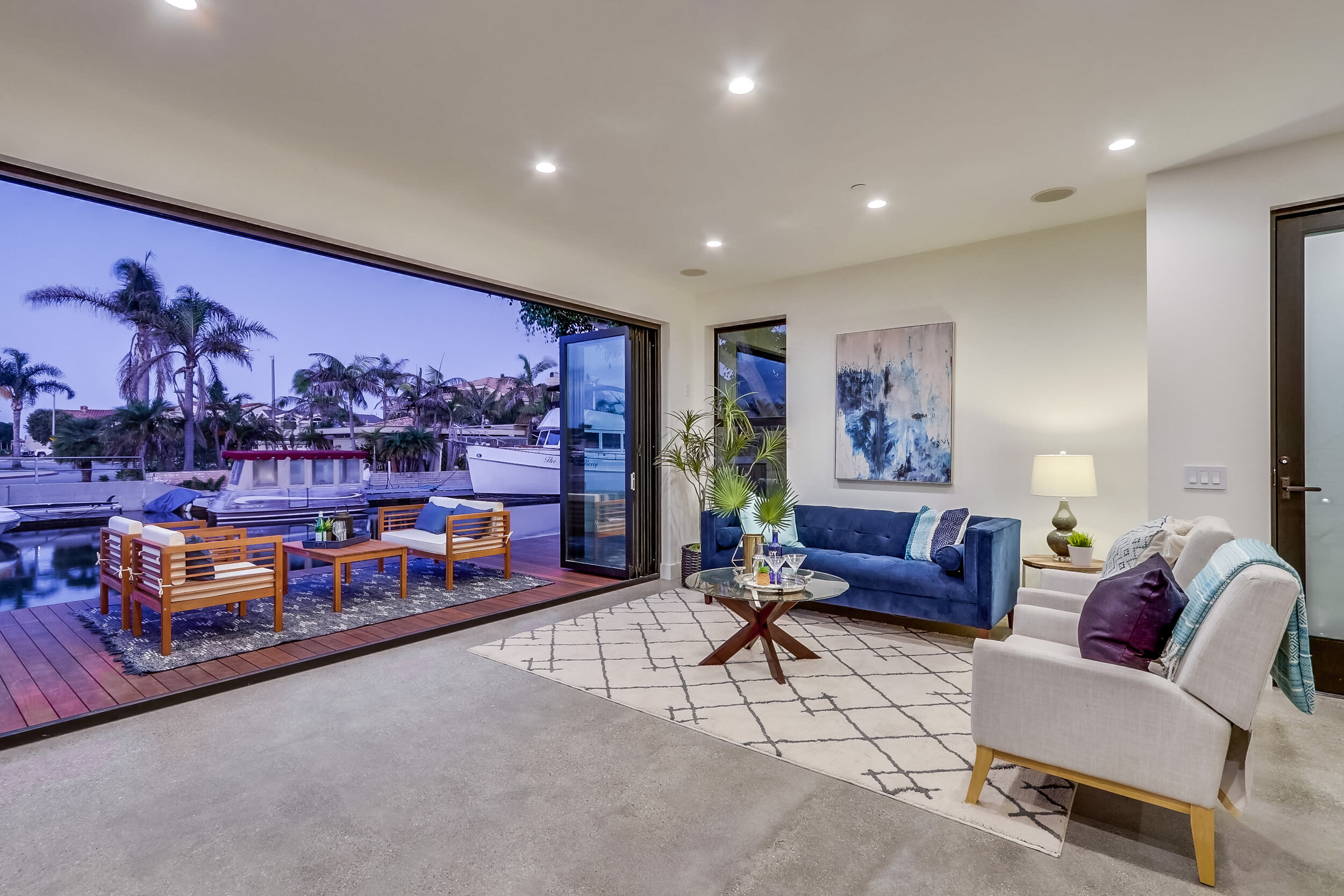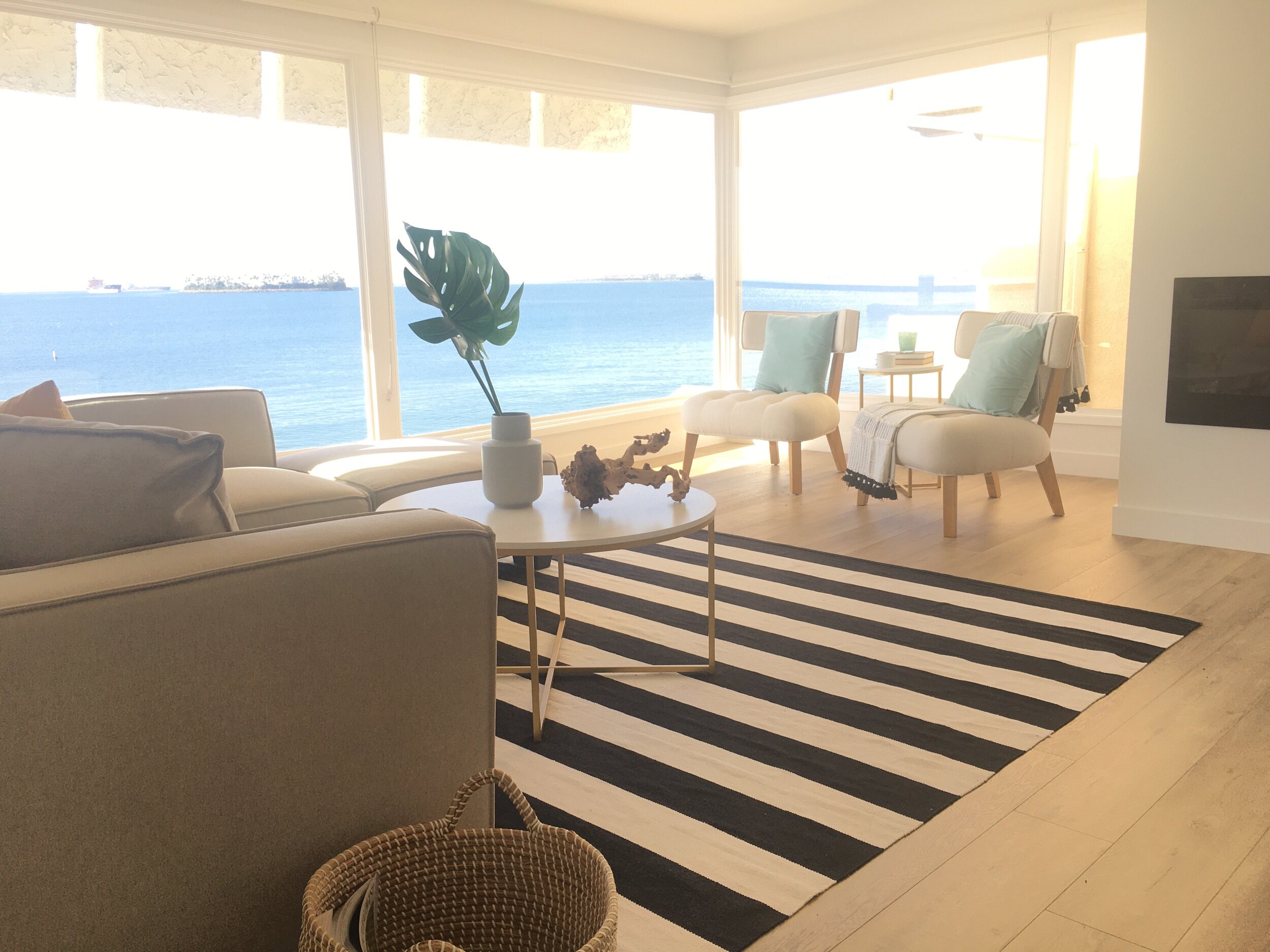King Sized Bed fits nicely into this space.
What’s the virtual staging trap? Thinking you can stage a home ‘virtually’ using modern tools and have it sell faster. Virtual Stagers use photo-editing software to doctor your listing photos of empty (or poorly furnished) homes to make them more enticing to buyers. The idea is that you can get a buyer interested in your listing by showing them pretty pictures of the property. But what happens once the buyers tour the home in-person?
The art (and it is an art) of staging is about more than just making your listing look better in the photos. Yes, stunning visuals are important in properly marketing a property, but what happens when your buyer, drawn in by a compelling listing photo, arrives only to find sterile, empty rooms when they tour the property. They can’t sit down in a ‘virtual’ family room and imagine themselves watching the big game while the kids play on the floor. They can’t sit at a ‘virtual’ dining table and imagine holiday dinners with family and friends. Staging is about creating a mood for your buyer. Like set decoration for a stage play or a movie, staging helps set the tone for the scene you want the buyer to experience when they tour the property.
We had a client recently who thought they could save some money by staging some of the bedrooms virtually. The rooms looked good when you saw them on the Internet. When buyers got to the property, however, most thought the bedrooms look smaller in real life. Buyers could not ‘see’ the rooms, the virtual staging wasn’t there and they could not imagine the space since it was not furnished. The listing sat on the market and we were called in to do traditional staging.
Consumers are savvier, they watch HGTV and read style blogs, they know what they like and don’t like. A good Stager will complement the style of the property and reflect the taste of the area’s demographic with their furnishings. Home Staging can help your buyers feel good about your listings, help you sell faster and for more money.
Call us today, we look forward to speaking with you about your listing.




